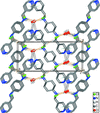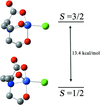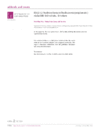issue contents
October 2016 issue

Cover illustration: The fruit rind of M. malabarica (family: Myristicaceae) is popularly known as Rampatri in Mumbai, India. It is used as an exotic spice in various Indian cuisines and also as a phytomedicine. A detailed phytochemical investigation of a methanol extract of the fruit rind of M. malabarica was carried out and a new type of molecule, an aryl cyclohexyl nonanoid, was isolated as a minor component. It was shown to exhibit anti-proliferative activity against various cancer cell lines. It comprises three molecular components, a 4-hydroxyphenyl ring, a 3,5-dihydroxcyclohexa-2,5-dienone ring and a bridging nonanoyl moiety. In the crystal, molecules are linked by pairs of O-H O hydrogen bonds, forming inversion dimers with an R22(36) ring motif. See: Bauri, Foro & Do [Acta Cryst. (2016). E72, 1408-1411].
O hydrogen bonds, forming inversion dimers with an R22(36) ring motif. See: Bauri, Foro & Do [Acta Cryst. (2016). E72, 1408-1411].
research communications












































Crystal structure of N,N′-bis(pyridin-4-ylmethyl)cyclohexane-1,4-diammonium dichloride dihydrate




























 journal menu
journal menu






















































